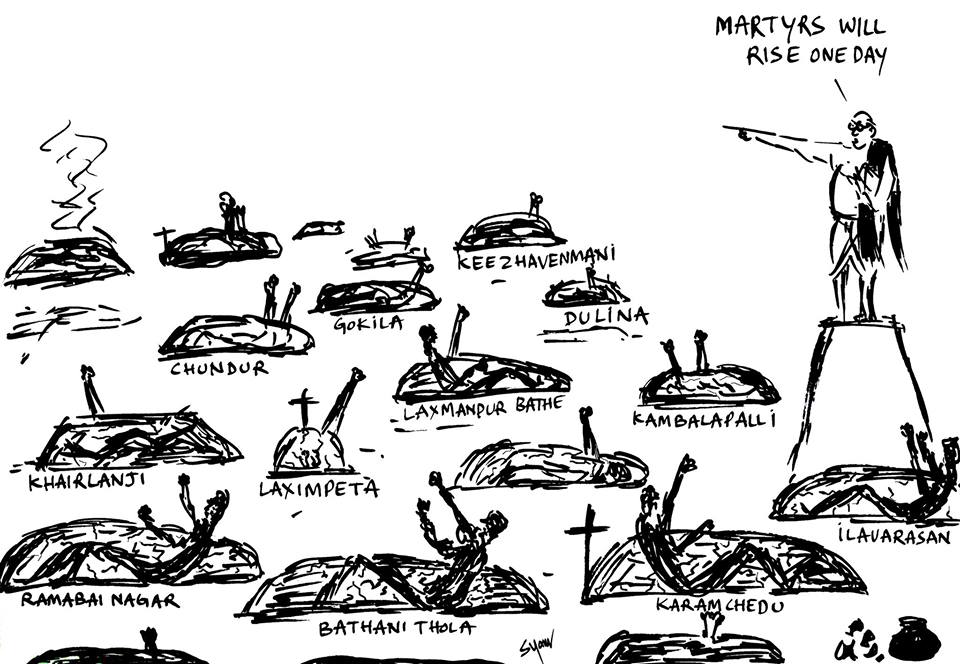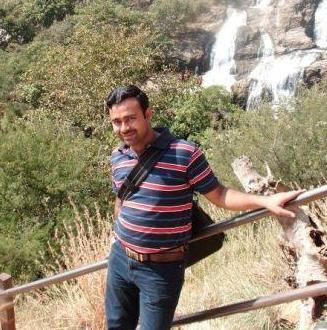Rajanikanta Gochhayat
 Manual scavenging, a caste based occupation imposed on certain Dalit communities under the division of labour in the Hindu caste system, means not only picking up night soil from dry latrines but also extends its tentacles to those working on railway tracks, manholes, public toilets, sewage, and even those working with protective equipment or empty hands. But it’s a matter of grave concern that the definition in the 1993 Act didn’t clearly define who a manual scavenger is and surprisingly, the definition of the present 2013 Act excludes those persons working with protective gear from being considered a manual scavenger. Its root lies in the traditional scared religious scriptures, particularly Naradiya Samhita and Bajasanei Samhita. Disposal of human excreta is one among the 15 duties enumerated in Naradiya Samhita for the slave. In Bajasanei Samhita, the Chandala and Paulkasa have also been referred to as slaves for the disposal of night soil. But some scholars allegedly state that scavenging profession became popular after the advent of Muslim rulers, and the subsequent growth of urbanization during the British period.
Manual scavenging, a caste based occupation imposed on certain Dalit communities under the division of labour in the Hindu caste system, means not only picking up night soil from dry latrines but also extends its tentacles to those working on railway tracks, manholes, public toilets, sewage, and even those working with protective equipment or empty hands. But it’s a matter of grave concern that the definition in the 1993 Act didn’t clearly define who a manual scavenger is and surprisingly, the definition of the present 2013 Act excludes those persons working with protective gear from being considered a manual scavenger. Its root lies in the traditional scared religious scriptures, particularly Naradiya Samhita and Bajasanei Samhita. Disposal of human excreta is one among the 15 duties enumerated in Naradiya Samhita for the slave. In Bajasanei Samhita, the Chandala and Paulkasa have also been referred to as slaves for the disposal of night soil. But some scholars allegedly state that scavenging profession became popular after the advent of Muslim rulers, and the subsequent growth of urbanization during the British period.
Any discussion on manual scavenging will be incomplete if we don’t peep at the arguments and counter-arguments between Gandhiji and Babasaheb Ambedkar. Gandhiji who believed in “Chaturvarna” and its division of labour, equated cleaning of excreta to a mother cleaning her son’s shit. He portrayed scavenging as dignified work. Deifying the occupation, he used to say, “I am not ashamed to call myself a manual scavenger and ask every manual scavenger that he should not feel ashamed of being called the same. To him, this society is based on many services, a scavenger is at the base of every service.” On the other hand, Babasaheb Ambedkar says, “How sacred is this work of cleanliness! That work can be done by a Brahmin or by a Bhangi. The Brahmin may do it in his wisdom, the Bhangi in ignorance. If either of the two disappeared from Hinduism, Hinduism itself would disappear.” He considered, as contrary to Gandhiji, manual scavenging to be a symbol of slavery and advocated for its eradication.
After 70 years of our independence, the scavenging community didn’t get independence from caste-based slavery under the Hindu social order. One may wonder who is really responsible for the maintenance of the status quo. Here the discussion encompasses the legal and political points of view to find out the answer to such questions. Theoretically, the debate over “Politics of Ideas” and “Politics of Presence”, provides some sense of understanding about why the qualitative representation is necessary. The arguments in “Politics of idea” suggests a broadly secular understanding of politics as a matter of judgment and debate, and expects political loyalties to develop around policies rather than people. No matter who the representatives are but what matters here is the policies, preference, and ideas they represent for their constituents. The theorist justifies the idea of politics by invoking the mechanism of accountability that minimizes the significance of the individual elected.
Through this process, the representatives would be held accountable to the electorates for whatever they have done. The mechanism of accountability reduces the discretion and autonomy of individual representatives, in the process, they seem to minimize the importance of who these individuals might be. However, the “Politics of Presence” recognizes the political exclusion of the disadvantaged group who are socially, culturally and economically different from the dominant group and demands their inclusion in policymaking. This is ignored in “Politics of ideas”. Once the difference is conceived, in relation to those experiences and identities that may constitute different kinds of groups, it is far harder to meet demands for political inclusion without also including the members of such groups. White people may conceivably stand in for those of Asian or African origin when it is a matter of representing particular programmes for racial equality. But can an all-white assembly really claim to be representatives when those it represents are so much more ethnically diverse? Adequate representation is increasingly interpreted as implying an adequate representation of the different social groups that make up the citizen body and the notion of “descriptive representation” has emerged, in which the leadership shares a common identity and culture with the electorate.
Moreover, Irish Young in her work argues that a democratic public should provide a mechanism for the effective recognition and representation of the distinct voices and perspectives of those constituent groups that are oppressed and disadvantaged. Failing such mechanism, the policy outcomes will almost inevitably reflect the preconception of the dominant groups. Young has been concerned mainly with the role of oppressed social groups in the formation of public policy, to generate policy proposals which the decision makers would then be required to take into account.
Despite the consistent efforts of Babasaheb Ambedkar for separate electorates to ensure substantive representation, representation for the scheduled castes and scheduled tribes was envisaged through political reservation in the constitution. However, this provision ensuring representation of SC/ST suffers methodological challenges in terms of the electoral system. Since it converted the demand for group representation (politics of presence) into group integration (what we may call here the politics of ideas). As a result of which the Dalit leadership functions under the patronage of political parties dominated by upper castes, in which the upper castes have a greater role to play in the policymaking. Based on the ideas of group difference, as upper castes differ from the lower castes, their preconception gets reflected in the law and policy for lower castes. Here it is necessary to discuss the way the Indian progressive leaders have formulated laws and policies for the Dalits, particularly the laws for the elimination of manual scavengers. The government of India passed a law called “The Employment of Manual Scavengers and Construction of Dry Latrines (Prohibition) Act, 1993”. Their pre-conception which is latent in the form of who will do the same work (threat to division of labour), manifests in the laws that contain many loopholes.
On 12th August 1993, the members who participated in the National Commission for Safai Karmachari Bill argued for the setting up of a Safai Karmachari Commission to recommend a specific programme of action, alternative occupations for the manual scavengers and free education for the manual scavengers’ children. Most of them couldn’t raise the major issues involved in manual scavenging, such as how to strengthen the Commission, how the Commission should deal with state or individuals found guilty of manual scavenging. Thus no amendment was moved by the members and the Bill was passed in its original form. The legislators’ behavior of not moving Amendment in the Bill again reveals the MPs’ satisfaction with whatever the government proposed. The law was passed in 1993, but it took 4 years to reach the President for assent. The Employment of Manual Scavengers and Construction of Dry Latrines (Prohibition) Act, 1993 was under health and sanitation which is a state subject. Under article 252(1) the law passed by parliament will be applicable to such states which adopt this Act by passing a resolution in the assembly. Some states didn’t take any action immediately on it till they were sent notices by the Supreme Court. According to chapter four of the Act, the punishment was mentioned in Article 14, but it was not specified who should be punished, whether the Manual Scavenger or the employer. Article 17 of chapter four, states that if a Manual Scavenger wishes to register a case, he will have to take prior permission of the executive authority. The point here is that the operative officer who is appointed to operate the law will have to give permission to file a case against him for failing to implement the law.
Under this law, the definition of Manual Scavenger was limited to those cleaning dry latrines only, whereas those who were engaged in cleaning railway tracks, manholes, sewage lines, septic tanks, open toilets were left out of the ambit of the law. These Manual Scavengers were deprived of the benefits from different schemes. Again, the Prohibition of Employment as Manual Scavengers and their Rehabilitation Act 2013 or M.S. Act 2013 was passed with certain lacunae.
Prime Minister Narendra Modi, who is selective in remembering Gandhiji, is now preaching “Swachh Bharat Mission”, spending huge amounts of money on its promotion. Is he oblivious to that fact that the existence of manual scavenging has a grave impact on Manual Scavengers? He seems to hold the philosophy written in his book “Karmayog”, where his thoughts run like this: that manual scavenging was something Valmikis’ would not have done, had they not felt that it was their calling. I don’t believe that they have been doing this job just to sustain their livelihood. Had this been so, they would not have continued with this type of job, generation after generation. At some point of time, somebody must have got the enlightenment that it is their (Valimikis’) duty to work for the happiness of the entire society and the gods; that they have to do this job bestowed upon them by God, and that this job of cleaning up should continue as an internal spiritual activity for centuries. This must have continued generation after generation. It is impossible to believe that their ancestors did not have the choice of adopting any other work or business.
Here many questions arise: why did god single out Valmikis for this occupation? Why not others? Isn’t God unfair to Valimikis? If Valmikis are getting enlightenment through this occupation and making the entire society happy, why don’t others like “Yogi” or “Sadhvi”, who are Ministers or MPs and MLAs from Modi’s party, enter the manhole for enlightenment? As manual scavengers do this work for internal spirituality. Why don’t upper castes who go to different holy places or temples for internal spirituality take up this occupation? The Prime Minister believes that the ancestors of scavengers had the choice of adopting other occupations. But the untouchability faced by manual scavengers in Gujarat is rampant. Due to untouchability, a manual Scavenger can’t sell even ‘Pakodas’. Through the “Swachh Bharat mission”, the Prime Minister is silencing caste and sanitizing oppression of the manual scavengers.
Due to the insensitive attitude of lawmakers and apathy of the bureaucracy, the condition of the manual scavengers has remained deplorable. In India, it is estimated that thousands of manual scavengers die every year in the sewers, or through various diseases like TB, asthma, respiratory diseases, cancer etc. The lifespan of manual scavengers is not more than 45. Over 300 cases of death due to manual scavenging have been reported from across the country in 2017 alone.( 8) Not only this, the ministry has also reduced the budgetary allocation for rehabilitation of manual scavengers by over 95% since 2014, the year Prime Minister Narendra Modi came to power. In 2014-15, the budgetary allocation under the “Self Employment for the Rehabilitation of Manual scavengers” was 448 crore, which was reduced to just Rs. 5 Crore in 2017-18. The drastic drop in budgetary allocation was witnessed from the financial year 2016-17 when the budgetary allocation was reduced to 10 crores and was further reduced by half during the budget last year.
Whereas, the government has spent close to Rs 530 crore on promoting the “Swachh Bharat” (Clean India) Mission in the media since the programme was announced in 2014. In this process, Manual scavengers, being subject to “active exclusion” by the deliberate government policies and laws are heading towards the zone of genocide. Finally, these facts expose the role of upper caste identity of the leadership in legislation and give rise to a ademand for politics based on Dalit identity.
~
References
Kumar, Narendra. (2004)Dalit Politics,Shipra Publication.
Over 300 manual scavenger death in 2017, Dalit Post Magazine, Feb
Philip, Anne (1998). Politics of
India a Disgrace to the country, Concept Publishing. Policies and Parliament
Singh, Bhasha. (2014) Unseen the truth about Presence, London Guildhall University.
Sen, Amartya. (2000). Social Exclusion,Concept, Application, and Scrutiny. Social Development Paper No.1, Asian Development Bank. PM Modi’s view on manual scavenging have changed quite a bit over seven years, The News Minute, Sunday, April 26, 2015.
Srivastava N. (1997) Manual Scavenging in India’s manual scavenger, Penguin Publication.
Swachh Bharat spent Rs 530 crore on Publicity in three years- but little on grassroots awareness, scroll.in November 22.
The employment of Manual scavengers and construction of Dry Latrine (Prohibition) Act, 1993
~~~
Rajanikanta Gochhayat is a Ph.D Scholar in Indian Institute Of Dalit Studies, New Delhi. He is interested in Political Representation, Social Exclusion and Economics of Discrimination.










